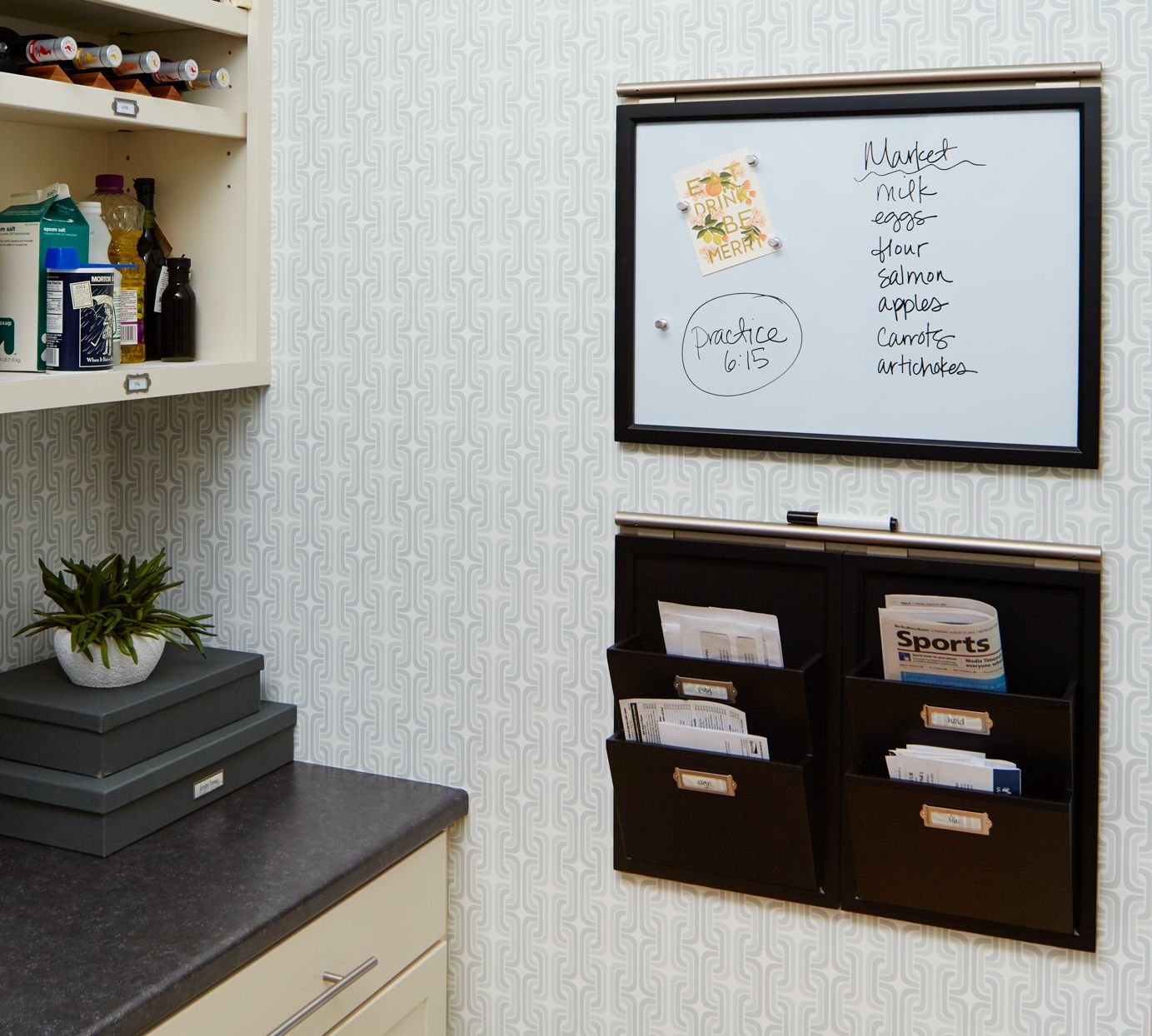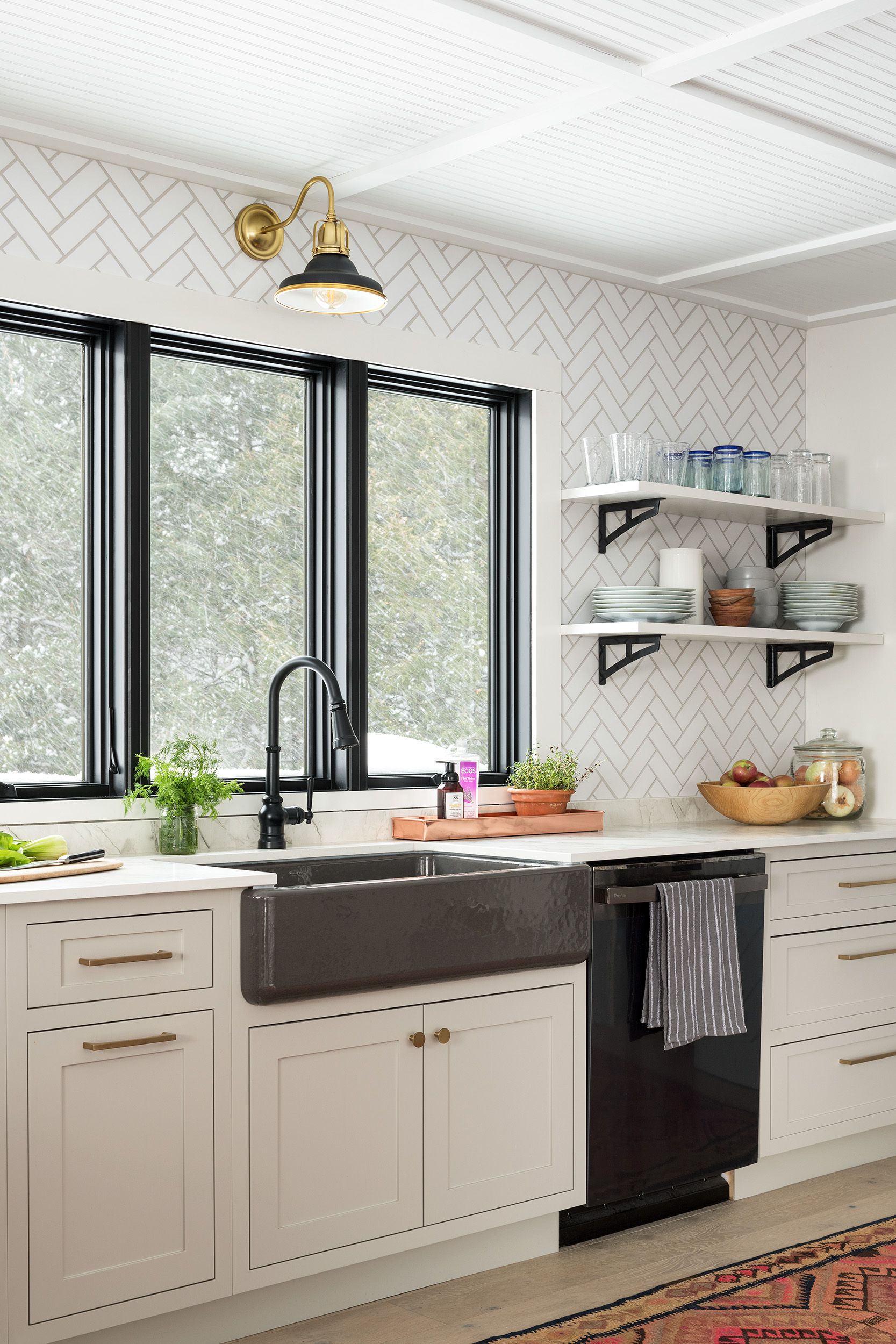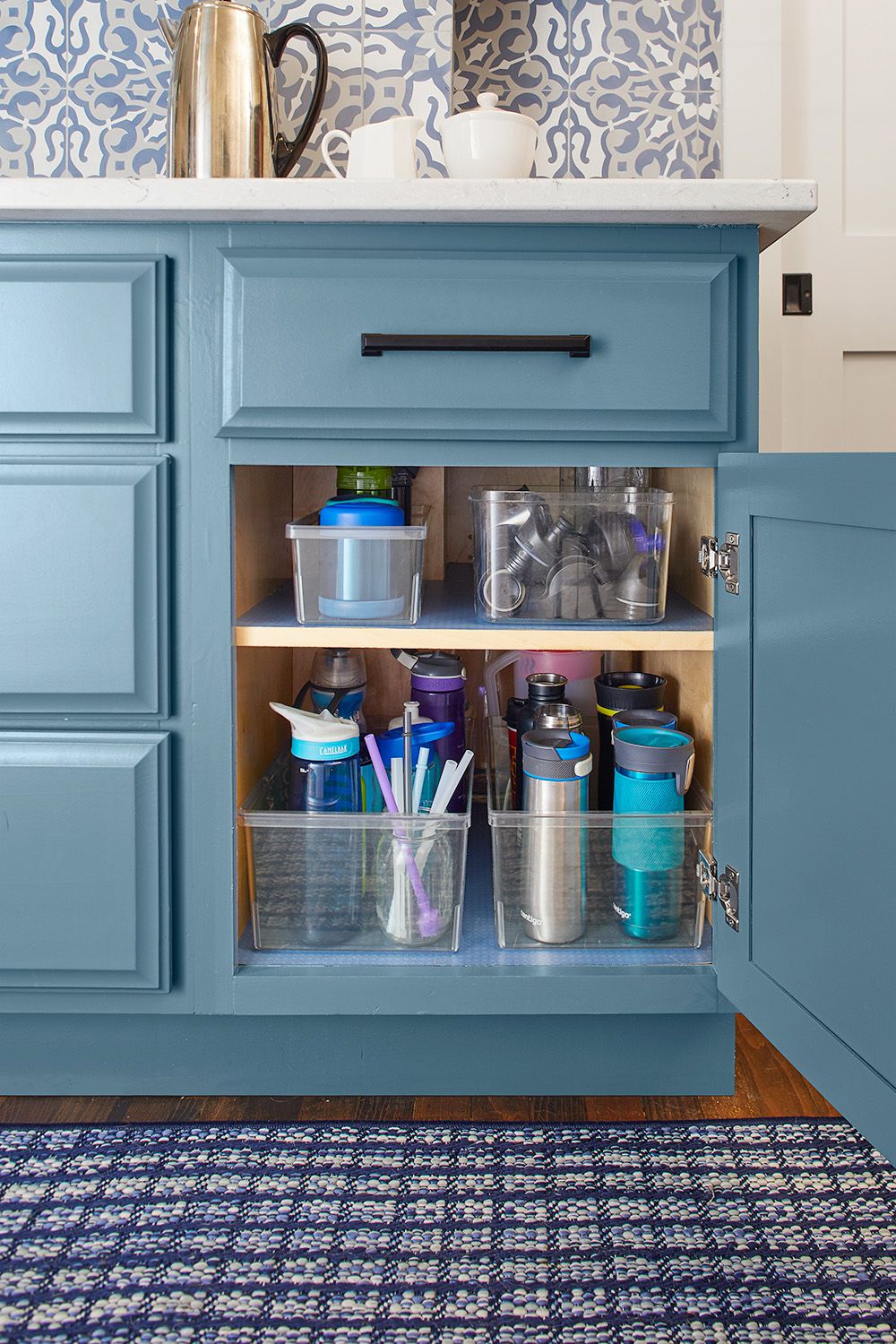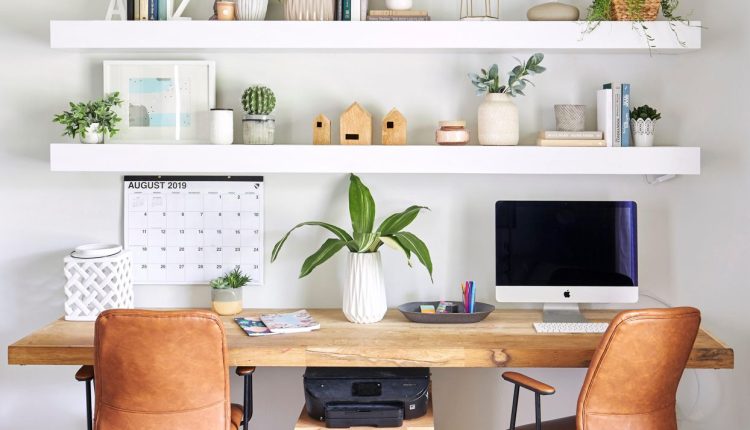14 Easy Ways to Be More Organized
Life gets hectic. Get control of yours, along with your home, with these everyday small tasks that equal a big payoff.
As a professional organizer who also suffers from ADHD, I walk the line of wanting my house to be spotless and not wanting to stress about it. Over the years, I’ve found that the best way for anyone to strike that balance is to create simple systems and schedules that are easy to keep up with. Putting a little effort into staying organized upfront or checking off minor tasks regularly to avoid a clutter pile-up will start to feel like second nature over time.
The following organizing habits can be practiced every day, and allow for a more organized space, schedule, and even mental state.
1. Make Your Bed
Making your bed every morning should take a mere minute and will set the tone for the rest of your day. It immediately makes you feel more productive and makes your bedroom look neater. And there’s no need to master any fancy techniques (unless you want to, of course). Do it as the water heats up for your morning shower. Or if your partner sleeps in longer, give this job to them.
2. Corral Everyday Items
Have a go-to spot where the items you use or take with you every single day can be found. Add a tray in your entryway drop zone to place your keys, sunglasses, and wallet or a lazy Susan on the bathroom vanity to contain your deodorant, toothbrush, and mouthwash. This will prevent any running around looking for something that could make you late. Just remember to consistently return items when you’re done with them.

3. Use a Dry-Erase Board Calendar
This easy way to be more organized is a game-changer. While digital calendars have their place, sometimes it’s necessary to jot down small reminders that tend to otherwise slip through the cracks, such as running errands. Instead of a slew of sticky notes or using pages upon pages in a notepad for temporary memos, scribble these to-dos onto a dry-erase calendar for a constant visual reminder. If you’re thinking about creating a family command center, consider adding a dry-erase board for these quick notes.
4. Go Paperless
Paper piles can be one of the most tedious clutter pitfalls. One way to minimize the mess is by going paperless with statements and bills. Another is to reduce the amount of junk mail you receive by either removing yourself from lists that you’re on or opting out of credit card or insurance offers. I like to direct people to this helpful FTC article and remind them that taking a few minutes to unsubscribe will save you a ton of time in sorting through mail later on.
5. Keep It Simple
For the papers you must hold onto, create an uncomplicated organization system, such as an in-and-out wall-mounted or desktop sorter, a file box, or a small cabinet. Keep storage labels short and sweet; if it’s too intricate, it will be harder to maintain your paper-sorting system.
This method can apply to anything else in your life, from your email inbox to your pantry. Rather than creating a dozen different snack categories, just have a couple of bins separating salty and sweet or open and unopened. Divide a sock drawer into only two types, with the kind you wear most often front and center. Overall, it’s important to keep things organized but refrain from using elaborate systems that feel impossible to keep up.

6. Clear Surfaces (and the Sink)
When it comes to a blank space, many people’s inclination is to fill it. This is most apparent on the surfaces in your home. Set aside a few minutes every day to put away items that you’ve taken out or brought home. At the very least, use trays or baskets to collect common countertop clutter, such as chargers and things that eventually need to be put back elsewhere. And don’t underestimate the power of an empty sink or dish strainer at the end of the day; it can make the entire kitchen appear neat and tidy.
7. Habit Stack
Create time in your day to tidy by finding segments where you could be multitasking. With ADHD, I find it hard to juggle more than one thing at a time, but I’ve found little ways where I can habit stack, or combine two activities in one. For example, sort through your mail while your coffee is brewing, wipe down counters as the oven is preheating, or clean your bathroom as the tub fills. The purpose behind habit stacking is to combine tasks to streamline your schedule.
8. Batch Tasks and Time Block
If stacking isn’t always possible, consider grouping tasks together and setting aside specific times to do them. I find that when I’m focusing on answering emails for a half hour, I get more accomplished in a shorter period of time as opposed to answering them as they come in throughout the day. The same goes for meal prepping. Cook at designated times during the week, or do it all on the weekend, and save yourself time and stress on a daily basis.
9. Plan Ahead
Take the time to figure out a schedule for the things you need to do regularly, whether that’s preparing meals, doing loads of laundry, cleaning and organizing, or even keeping up with your beauty routine. Write down a routine that will realistically work for you most of the time. Of course, things come up such as travel or busy work deadlines, but if you have an organized schedule for the days you wash your sheets (or your hair), you’re much more likely to try to stick to it.
10. Set a Timer
This is an easy organizing trick that actually works. For mundane tasks like tidying (yes, even I don’t want to do it most days), set a timer for however much spare time you have or want to give on that day and compete against it to get as much done as possible. Even if you don’t finish everything, you’ll accomplish more than if you didn’t clean up at all. And if you haven’t tried it yet, check out the Pomodoro technique, as it’s been known to successfully help users be more productive in less time.

11. Declutter Regularly
To be more organized, let go of as much as you bring into the house to curb clutter. Have a donation bag in your closet that you can drop things into as you come across them, then give it to your local charity when full. Look through your medicine and toiletries at the start of each season and toss anything expired. Do the same with your fridge, freezer, and pantry on a weekly basis. It might not feel like much in the moment but it will keep you in the habit of letting go, and make a big difference in staying organized over time.
12. Think Before Buying
Another way to restrict the amount of stuff coming into your home is to work on impulse shopping. As someone who used to buy anything cute or on sale, I was not only cluttering my home but also collecting more things to clean up on a daily basis. Now, I leave things in my cart for a day or more before buying. After that, assess if you need or want the item, or check to see if you can borrow it from a friend instead.
13. Take Out the Trash
And not just the bag in the can. Get rid of all the little things that add up in random areas throughout your home. Place a small garbage bin or bag in your car and empty it regularly, toss the miscellaneous trash that made its way into your purse at the end of each day, and place a basket in your bedroom to catch those clothing tags that would otherwise litter your dresser.
14. Don’t Fight the Bedroom Chair
We all have a version of the “chairdrobe.” It could be a bench, a stationary bike, or, in my case, an ottoman. It’s the place where clothes that are too clean to put in the laundry basket but too dirty to put back in the closet or dresser get tossed into purgatory. There are some smart solutions, such as installing hooks on the back of the door or having a separate hamper specifically for these types of clothes. But if your current chair (kind of) works, don’t fight it. However, make a point to clear it off at least once per week. If you’re doing laundry, sort through the stack and decide if you’ll wear it in the coming days or if it should just get washed and properly put back away.

